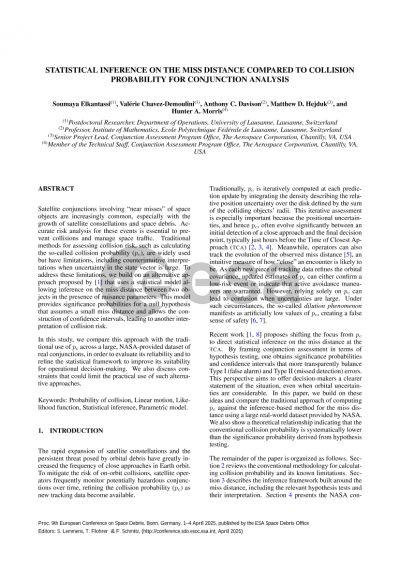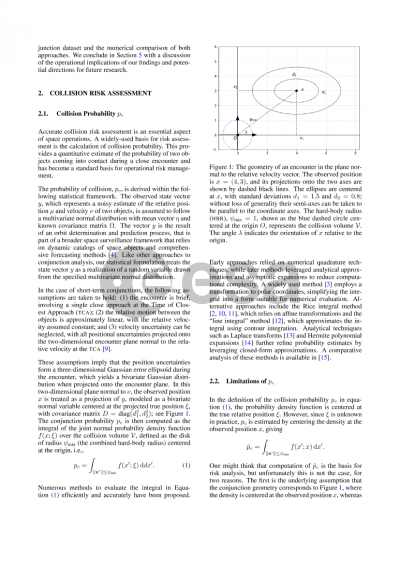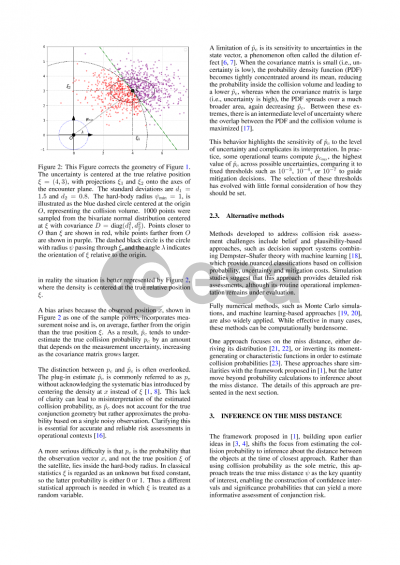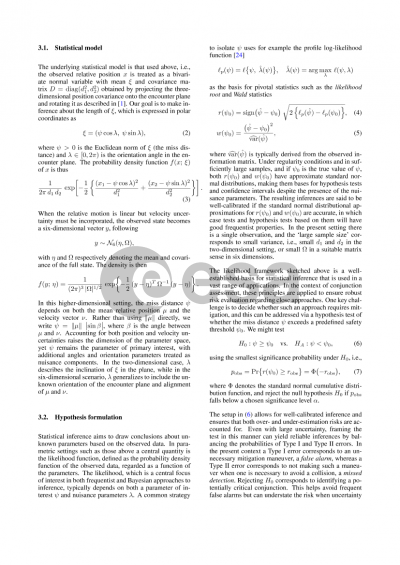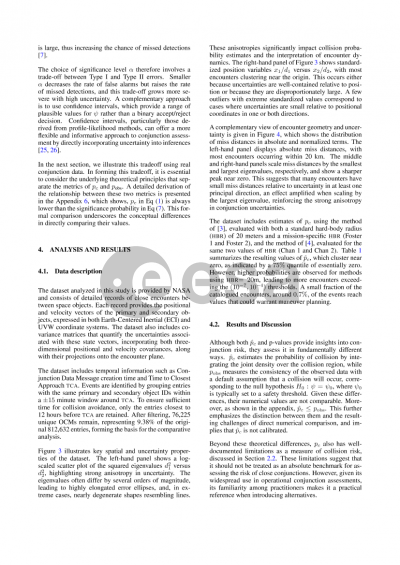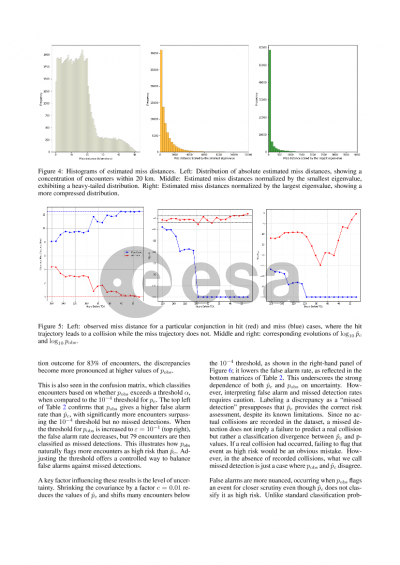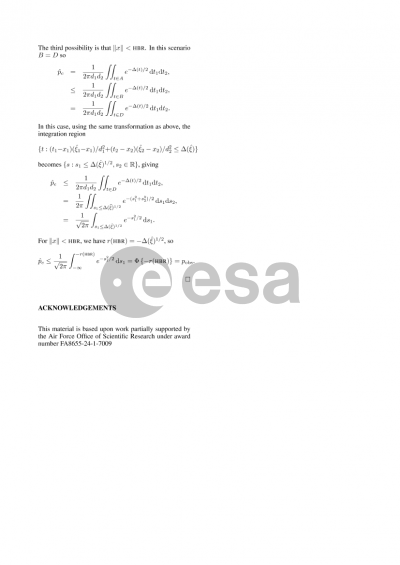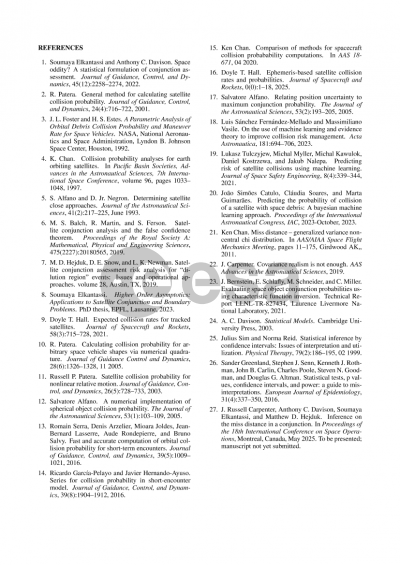Document details

Abstract
Satellite conjunctions involving “near misses” of space objects are increasingly common, especially with the growth of satellite constellations and space debris. Accurate risk analysis for these events is essential to prevent collisions and manage space traffic. Traditional methods for assessing collision risk, such as calculating the collision probability (Pc), are widely used but have limitations, including counterintuitive interpretations when uncertainty in the state vector is large. To address these limitations, we build on an alternative approach proposed by Elkantassi and Davison (2022) that uses a statistical model that allows inference on the miss distance between two objects in the presence of nuisance parameters. This model provides significance probabilities (p-values) for a null hypothesis assuming a small miss distance and allows the construction of confidence intervals, leading to a clearer interpretation of collision risk.
In this study, we compare this approach with the traditional use of Pc across a large, NASA-provided dataset of real conjunctions, in order to evaluate the reliability of this alternative approach and to refine hypothesis testing criteria within the statistical framework to improve its suitability for operational decision-making. We also discuss constraints that could limit the practical use of such alternative approaches.
Preview
